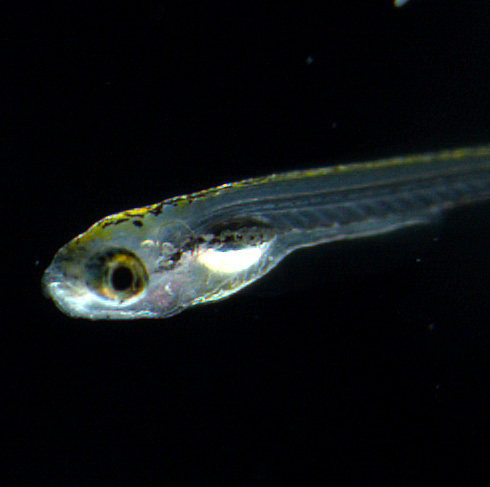 The Whitney Laboratory for Marine Bioscience
The Whitney Laboratory for Marine Bioscience

Congratulations to Whitney researchers Dr. Elias Lunsford, Dr. Yuriy Bobkov, Brandon Ray, Dr. James Liao and Dr. James Strother who published a paper titled "Anion efflux mediates transduction in the hair cells of the zebrafish lateral line" in Proceedings of the National Academy of Sciences.
Signals in the brain are principally carried by electrical waves. In nearly all cases, these electrical waves are produced by opening pores on the surface of a brain cell, which allows positive ions in the surrounding fluid to flood into the cell. This inward flow of positive ions sets off a chain reaction that results in an electrical wave that propagates across the brain cell. Surprisingly, their team recently found that the sensory cells that fish use to sense water flow operate using a different mechanism. They found that because these cells are on the surface of the body and surrounded by fluid that has few ions, it is unlikely that positive ions flowing into the cells would be able to produce a sufficient electrical signal. Instead, their results show that these cells are driven by opening pores that allow negative ions to pass out of the cell. A flow of positive ions into the cell is electrically equivalent to a flow of negative ions out of the cell, both increase the electrical potential of the cell. It is possible that this shift from using positive to negative ions increases the overall robustness of this sensory system as the fish moves between different environments.
These findings may suggest that sensory pathways leveraging negative ions may not be as uncommon as once thought.
Interestingly, the sensory cells used by fish to sense water flow have close evolutionary ties to the sensory cells in the ear that humans and other vertebrates use for hearing and balance.
Therefore, this discovery also provides new insights into the physiology and evolution of this entire family of sensory cells.

Image credit: Larval Zebrafish - 7dpf larva, akiramuto.net/archives/458, CC BY 4.0, Credit: National Institute of Genetics